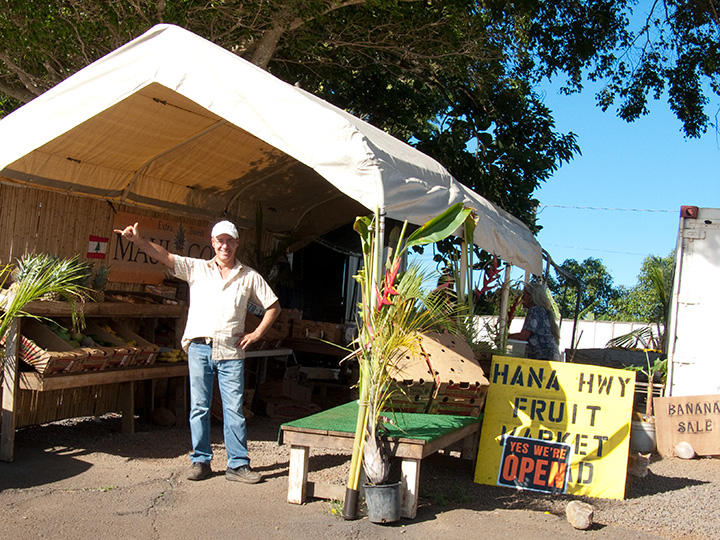The Oriental Fruit Fly
The adult Oriental fruit fly is somewhat larger than a housefly, about 8 mm in length. The body color is variable but generally bright yellow with a dark "T" shaped marking on the abdomen. The wings are clear. The female has a pointed slender ovipositor to deposit eggs under the skin of host fruit. Eggs are minute cylinders laid in batches. The maggots (larvae) are creamy-white, legless, and may attain a length of 10 mm inside host fruit.
The Oriental fruit fly has been established in Hawaii since 1946 where it is a major pest of agriculture, particularly on mangoes, avocados and papayas. Maggots have been found in over 125 kinds of fruit and vegetables in Hawaii alone. A great number of crops in California are threatened by the introduction of this pest, including pears, plums, cherries, peaches, apricots, figs, citrus, tomatoes and avocados. It has been estimated that the cost of not eradicating Oriental fruit fly in California would range from $44 to $176 million in crop losses, additional pesticide use, and quarantine requirements.
Females lay eggs in groups of three to 30 under the skin of host fruits; the female can lay more than 1,000 eggs in her lifetime. Maggots tunnel through the fruit feeding on the pulp, shed their skins twice, and emerge through exit holes in approximately 10 days.
The larvae drop from the fruit and burrow two three cm into the soil to pupate. In 10 to 12 days, adults emerge from these puparia. The newly emerged adult females need eight to 12 days to mature sexually prior to egg laying. Breeding is continuous, with several annual generations. Adults live 90 days on the average and feed on honeydew, decaying fruit, plant nectar, bird dung and other substances. The adult is a strong flyer, recorded to travel 30 miles in search of food and sites to lay eggs. This ability allows the fly to infest new areas very quickly.
In excess of 230 fruits and vegetables have been attacked. Fruit that has been attacked may be unfit to eat as larvae tunnel through the flesh as they feed. Decay organisms enter, leaving the interior of the fruit a rotten mass.
Hana Highway Fruit Market

Creative entrepreneurial efforts deliver Maui Agricultural products directly into the hands of the neighborhood community and also tourists traveling to Hana. In addition to traditional items such as Maui Gold Pineapple, banana, and avocado the Hana Highway Fruit Market provides exotic fare such as loquat and lychee.
Hawaii Avocado Report.
Here is the PDF file for the Hawaii Avocado Report.
Click for complete Avocado Report
Please visit the website for more information: http://www.nass.usda.gov/hi/
————————————————————-
Contact Information:
Mark E. Hudson, Director
USDA NASS Hawaii Field Office
1421 South King Street
Honolulu, HI 96814-2512
Office: (808) 973-9588 / (800) 804-9514
Fax: (808) 973-2909
————————————————————-
Hawaii avocado production declines 14 percent

Avocado growers noted that uneven rains and the overall dry weather were major factors for the lowering yields during the 2008/09 season.
Farm price reaches record high
Hawaii avocado growers received an average a record high 73.0 cents per pound for the 2008 harvest, 7 percent higher than the previous season’s average farm price of 68.0 cents per pound.
California’s harvest lowest since 1979/80 season
California, which produces almost 78 percent of the U.S. total, suffered its lowest avocado harvest in 29 seasons (see next page). California’s 2008/09 harvest was hurt by record high heat last June which damaged the fruit that was beginning to mature on trees. Average farm prices, however, rose to a sixseason high of $2,000 per ton.